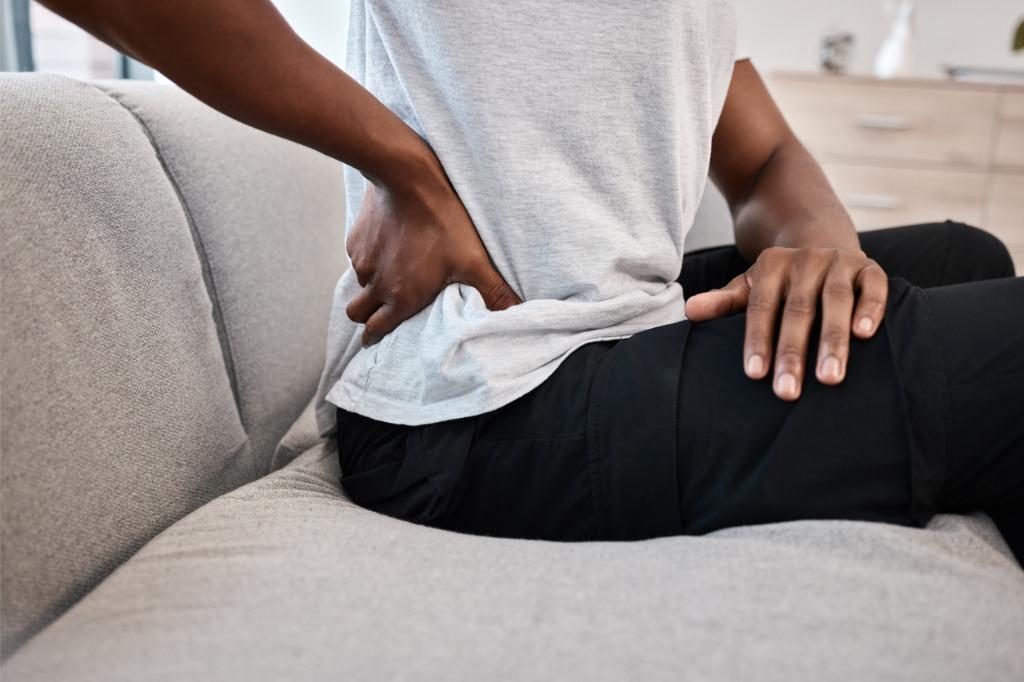Tips for Overcoming the Symptoms of Hip Impingement

Are you experiencing pain, stiffness, or reduced mobility in your hip joint? If so, you may be experiencing femoroacetabular impingement (FAI), more commonly known as hip impingement. FAI happens when the ball of the hip (femoral head) rubs against the cup-shaped socket of the hip (acetabulum). This can damage the cartilage surrounding the socket, called the labrum.
Motion Orthopaedics has put together this guide to help you learn more about this condition and understand when to seek treatment from our team of experts. We’ll take a closer look at FAI, including its causes and risk factors, common symptoms, and five tips to help you find relief before booking an appointment. Whether you’re dealing with hip impingement for the first time or have been struggling with it for years, the following information may help you take control of your joint health.
Causes and Risk Factors of Hip Impingement
Men are more likely to suffer from hip impingement than women, with age being another major risk factor. However, there are several other reasons why you may have FAI. These factors include bone deformities, overuse injuries, and repetitive activities. Recognizing the causes and risk factors of hip impingement can help you take steps to prevent it from occurring in the future.
Abnormal Hip Anatomy
An abnormal shape of the hip joint, such as a misshapen femoral head or an extra bone in the joint, may increase your risk of FAI. These anatomical deformities can cause the hip joint to rub during movement, resulting in impingement and damage to the cartilage. Abnormal hip anatomy can result from genetic defects or may develop after a traumatic injury.
Overuse Injuries
Athletes or individuals who participate in repetitive hip motions, such as running, jumping, or squatting, may be more likely to experience hip impingement. Over time, these activities can cause irritation and strain on the hip joint, leading to FAI. In addition, wearing the wrong type of shoes or not stretching properly before exercise may also put you at risk.
Genetic Factors
There may be a genetic component to hip impingement, meaning certain individuals may be more predisposed to developing the condition. While not everyone with a family history of hip impingement will develop it, understanding your genetic risk factors can help you take preventative steps to avoid the condition.
Previous Hip Injuries
Previous hip injuries, such as a labral tear, hip fracture, or dislocation, can increase your risk of FAI. Therefore, it’s essential to inform your doctor of any previous hip injuries. If you suffer from a hip injury, Motion Orthopaedics can help you manage the pain and improve your mobility.
Symptoms of Femoroacetabular Impingement
If you’re experiencing any of these symptoms, seek medical attention for an accurate diagnosis and treatment plan. These symptoms may vary depending on the severity of the impingement. Common symptoms may include:
- Pain in the hip joint, especially during or after activity
- Stiffness or reduced range of motion in the hip
- A clicking or popping sensation in the hip joint
- Weakness or instability in the hip joint
- Radiating pain in the groin or thigh
- Pain that is felt on the outside of the hip or in the buttock area
5 Tips for Overcoming Hip Impingement
If you’re dealing with hip impingement, there are several things you can do to help alleviate your symptoms and improve your joint health.
1. Consider Nonsurgical Treatments
Typically, treating this condition involves nonsurgical treatments such as physical therapy, anti-inflammatory medication, corticosteroid injections, and ice and heat therapy. These conservative treatments are almost always the first step in treatment and can help alleviate pain, improve range of motion, and prevent further damage to the hip joint. Your provider at Motion Orthopaedics will work with you to determine the best nonsurgical treatments right for you and your lifestyle.
2. Stay Active
Although it’s important to avoid activities that aggravate hip impingement, it’s also crucial to stay active and maintain a healthy weight. Low-impact exercises such as swimming and cycling can be beneficial for maintaining strength and flexibility in the hip joint. Exercising daily for at least 30 minutes may reduce pain and improve your overall physical health.
3. Incorporate Stretching and Strengthening Exercises
Stretching and strengthening exercises may improve hip joint mobility and reduce pain associated with FAI. Your healthcare provider or a physical therapist can recommend specific exercises tailored to your needs. Hip flexor stretches, glute bridges and single-leg lifts are some of the exercises that may be recommended. Before beginning any exercise program, be sure to consult with a healthcare professional.
4. Avoid Prolonged Sitting
Sitting for extended periods of time may exacerbate your symptoms. This is because the hip flexor muscles can become tight, further restricting movement and increasing joint pressure. If your job requires sitting for long periods, take frequent breaks to stand up and move around. Furthermore, if you work a desk job, consider using a standing desk and ergonomic chair to reduce stress on the hip joints.
5. Be Patient and Consistent
Recovery from hip impingement can take time, and progress may be slow. It’s important to be patient and consistent with your treatment plan and to communicate regularly with your healthcare provider to ensure you’re taking the right steps. With commitment and consistency, you can expect to gradually improve your symptoms over time.
Get Moving Again With Motion Orthopaedics
If you’re ready to take the next step in overcoming your hip impingement and living pain-free, it’s time to book an appointment with Motion Orthopaedics. Our state-of-the-art facilities, expert staff, and personalized treatment plans are designed to help you achieve the best possible outcome. Don’t let hip impingement hold you back any longer. Contact us today to schedule your consultation and start your journey toward better joint health.




